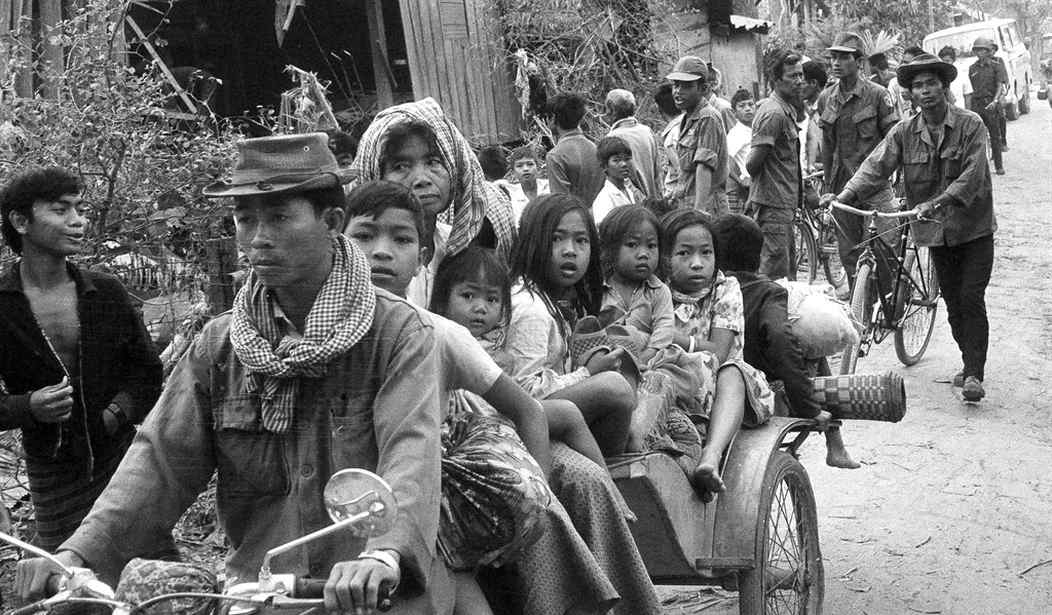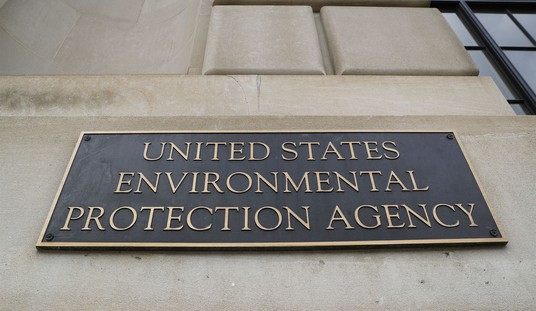When Samnop was young, brutal warfare was a fact of life. He grew up in a Cambodia controlled by the Communist Khmer Rouge regime, which committed mass murder of its own people. “I want to show to the world, to know the result of war,” he told me in exclusive comments to PJ Media.
Samnop, who goes by Sam, wants Americans and the world to understand how devastating war is and what happened in Cambodia under the Khmer Rouge, or the Communist Party of Kampuchea (CPK). CPK leader Pol Pot was one of the worst mass murderers of the 20th century.
“I want to show about my background, and about Cambodia, and about my family, because I want to show to the world about what happens after we have the war or during the war,” Sam told me. His school had stockpiles of weapons, and everyone carried them — even the children.
“And I spend my childhood life…in civil war, [many] years, because the war finish in 1998…almost 1999, so everything that happens in Cambodia that I pass through, I want to show to the world, to know the result of war,” Sam said. Most of his family died or was killed, and he almost shared their fate. But he survived to have a family of his own.
Significantly, the Chinese Communist Party (CCP) was reportedly the Khmer Rouge’s main international supporter. With the CCP now infiltrating America’s government and institutions, thanks to war-mongering socialist politicians, we had better ensure we don’t suffer the same tragedies as Cambodia did.
In early 1970, Marshal Lon Nol, supported by the Americans, staged a successful coup against the Prince Sihanouk, who had allied himself with Khmer Rouge. The latter, under the leadership of Solath Sar — better and more infamously known to history as Pol Pot — received Vietnamese aid and began winning against Lon Nol, who was still supported by the U.S. By 1975, the Khmer Rouge controlled the country.
The Khmer Rouge’s Marxist goals of a classless rural society created a nightmare — no schools, no liberties, no religion, all replaced by tightly controlled cooperatives, prisons, and re-education. Millions died, especially the educated, who were particular targets of the Khmer Rouge. The Cambodian “killing fields” were the scene of unspeakable atrocities. Sam experienced it firsthand.
Indeed, for many Cambodians, the dangerous aftermath of war still remains. “[W]e finish the war in 1998, but the disaster of landmine[s] and remnants, unexplod[ed] ordnance, still” exists, Sam explained.
“The evil weapons that destroy the people every days [sic]. Even nowadays, some people still got big problems of mine explosions, or remnants. That’s why the Cambodian Mine Action team still work on the field to clean up the land mines,” Sam told me. There is good news, however.
“I’m so great when I heard next year [in] 2025, we will finish the land mine clearings around the people[‘s] houses. It doesn’t mean they finish all the mines in Cambodia, but around the people[‘s] houses they finish the mines,” Sam celebrated.While all Cambodians know that their parents or grandparents lived through the horrific civil war, less than a third of the Cambodian population is over 41 years old, Sam said. “So we have a young generation.” He wants to remind “all my children and [the] young generation, to remember all this, because this is a big problem. We need people to live in a peaceful world together.”
The civil war was devastating. “Twenty-five of my families [sic] were killed during Khmer Rouge regimes. Three of my brother and sisters—two sisters, one brother—die [of] starvation, and I almost die many time, because I have no food, no healthcare, so [these are] problems.” There is a proverb about those who survived. “[Among] Cambodian people we said, when the people who survive from the tough time, from the bad time of the civil war or sickness, they said ‘golden blood, diamond bone.’ That is mean [the] person who survive from those stuff.”
When he was young, Sam continued, “I went to school. I [was] born in countryside … we have seven classrooms. In four classroom[s] we use for the children, three classroom we use for unexplod[ed] ordnance. So around our school we cover[ed] with mine[s] and unexplode[d] ordnance. So very dangerous. And the students stay with the mines, students stay with the weapon[s], and the people carry the guns, and everybody—every house, they have the guns.”
Some experts have put the death toll in Cambodia at less than 2 million, but Sam agreed with those who have higher estimates. “Khmer Rouge kill around 3 million peoples in 7 million peoples,” he told me. “You can tell almost half [of the population]. So 95% of educated people were kill[ed] during Khmer Rouge regimes. Because they want to find out five spies: CIA, FBI, KGB, Scotland Yard, and IIB from South Vietnam. So they suspect [the] educated people. And then they want clean up educated people,” because many of them had supported the Lon Nol regime.
Sam provided some background. “Lon Nol, he was the first president of Cambodia, who rules the country from 1970 until 1975. But when Khmer Rouge took over from Lon Nol, and they occupy Cambodia, and then he destroy—he try to destroy everybod[y] over there,” Sam said. “When Khmer Rouge occupy Cambodia, Khmer Rouge, they want to clean up educated peoples … because they believe five spies is in educated peoples. And [CCP dictator] Mao Zedong said, if you want to take the grass out, you have to take out the roots of the grass. So this is the reason why [Khmer Rouge] kill [so] many” in Cambodia.
Cambodia is starting to heal. I had a wonderful visit there, seeing the beautiful country and Angkor Wat, and meeting the people. There is a level of normalcy that comes with peace. Sam said, “I’m so happy when the people right now, they send their children [to] go [to] school, and have more school[s], and my children talk about education, and [that’s] different from me, when I was young we talking about gun[s].” When Sam was young, weapons were so common the children even used them in games or to find food.
For instance, Sam recalled making “firecracker[s]” from “the real bullet of AK-47 or M-16, so we use a real bullet like this, we put a nail in the bottom of the bullets, and then we use a coconut leaf around it, and we threw it up, and when it fall, it touch to the ground, it will explode.” The children burned fuses as part of their games and used grenades for fishing. “[I]f we want to eat the fish, they [have] no need to use a hook or fishing net, we just threw the hand grenade inside the river, inside the water, and then the fish comes out.”
Check back on PJ Media for more exclusive comments from Samnop about his and his family’s experiences under the Khmer Rouge and why Americans should visit Cambodia now.










Join the conversation as a VIP Member